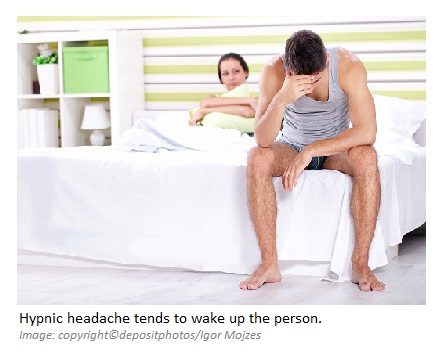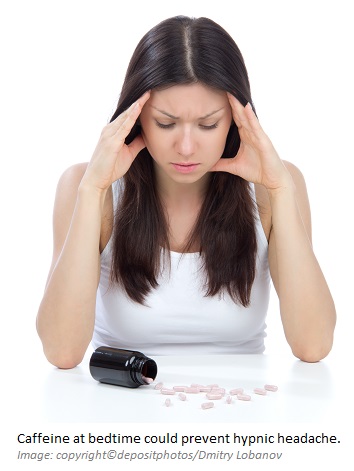It is a form of headache that is usually mistaken for migraine and cluster headaches. Unfortunately, most health practitioners do not think of this form of headache and they often miss to include this in their differential diagnosis.
This headache is benign and typically starts few hours after falling asleep and tends to wake up the person. This is why it is also known as “alarm clock headache“. The headaches usually last 15 to 90 minutes and it may last up to 3 hours after waking. The pain is mild to moderate and generalized. However, it could be in one side of the head and even throbbing.
Hypnic headaches affect women more than men and often begin after age 50 years, but it may be seen in younger people as well. The episodes of headaches can repeat up to three times through the night for 7 to 10 nights in a month. Nausea, photophobia and phonophobia are usually absent in this form of headache. Surprisingly, daytime naps may aggravate the headache.
It is important to differentiate this form of headache from other night-time headaches such as migraine, cluster headaches, sleep apnea, primary thunderclap headache, temporal arteritis, hemicrania continua, bruxsim-induced headache and other intracranial causes. A major contributing factor to hypnic headache is poorly controlled high blood pressure.
The unique feature of this form of headache, which occurs only during sleep and wakes up the person, is a key element to consider it in differential diagnosis.
Solutions To Hypnic Headache:
Majority of patients with hypnic headaches are treated for migraine, cluster headaches and even tension headaches without successful results, causing the patients to see multiple practitioners.
The exact mechanism by which hypnic headache occurs is not clear. Massage therapy, chiropractic and osteopathic approaches are usually ineffective. According to reference medical textbooks, one to two cups of coffee or 100-200 mg of caffeine at bedtime can prevent hypnic headache in approximately 30-40% of cases. Interestingly, caffeine does not prevent people with hypnic headache from falling asleep.
Based on our experience at the CAASN (Canadian Academy of Sports Nutrition), a combination of caffeine (100 mg), melatonin (10 mg) and 5-HTP (100 mg) at bedtime shows better results. If someone with hypnic headache did not respond to caffeine, melatonin and 5-HTP (5-Hydroxytryptophan), the patient would need prescribed medications. They usually respond well to a bedtime dose of lithium carbonate (200-600 mg). For those who cannot tolerate lithium, the alternatives would be methysergide, flunarizine, verapamil and indomethacin.
Abazar Habibinia, MD, DFN
Executive Director of The Canadian Academy of Sports Nutrition



